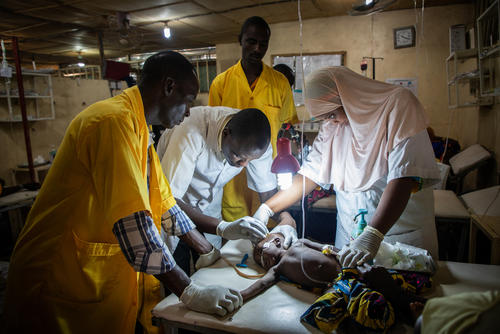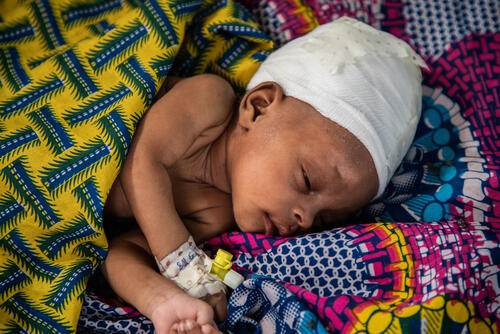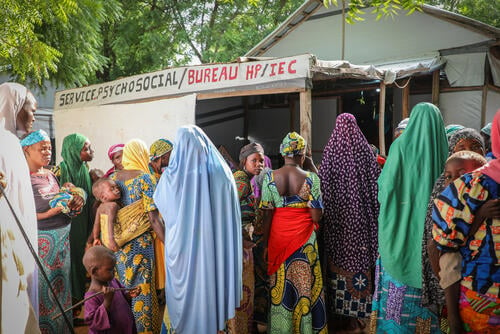In September 2018, in southern Niger, around 850 children were arriving at our paediatric unit in Magaria each week. The vast majority of admissions were for malaria and malnutrition. It was the busiest period since MSF had started working there in 2005. The unit became the biggest paediatric ward for malnutrition and malaria in the world, with more than 600 staff working around the clock.
“We used to admit around 140 children a day. It wasn’t easy,” says Awa Abou Amadou, MSF nurse at the paediatric unit in Magaria. Among other nurses and medical personnel, she worked for long hours straight – sometimes from dusk till dawn and beyond.
While our hospital was already terribly overwhelmed even with additional beds and staff, it was likely that some of the children who were seriously ill in the community were not getting the care they needed.

“When we would leave at night to go back to our families, our minds and thoughts were still with the kids at the hospital,” says Amadou.
“We always wondered what it was like in the most remote communities, where people couldn’t afford to come to the hospital.” For MSF, 2018 was a turning point in the history of the project. This “heavy machine” was not easy to operate and something needed to be done about it.
Since then, we have been investing in community-led models of care. In 2021, our teams were able to avoid a similar peak scenario, yet the journey to get here was not always easy.

Avoiding a seasonal deadly peak in Niger requires more than only a medical solution – it is multifactorial and requires more efforts. After the 2018 peak, we started increasing our presence in nearby villages and towns, either by supporting local health centres, reinforcing observation and stabilisation rooms, or by increasing community work at the village-level.
The aim was clear: decrease the number of severe cases at the paediatric unit to avoid a scenario similar to 2018. The strategy has been managed through various activities with support from hundreds of medical, paramedical and logistics team members. We have also worked in collaboration with the Ministry of Public Health as the main responder in Zinder region.
To learn more about the shift in our model of care that has dramatically reduced the number of malaria and malnutrition cases in our paediatric ward, visit our interactive story map here.



